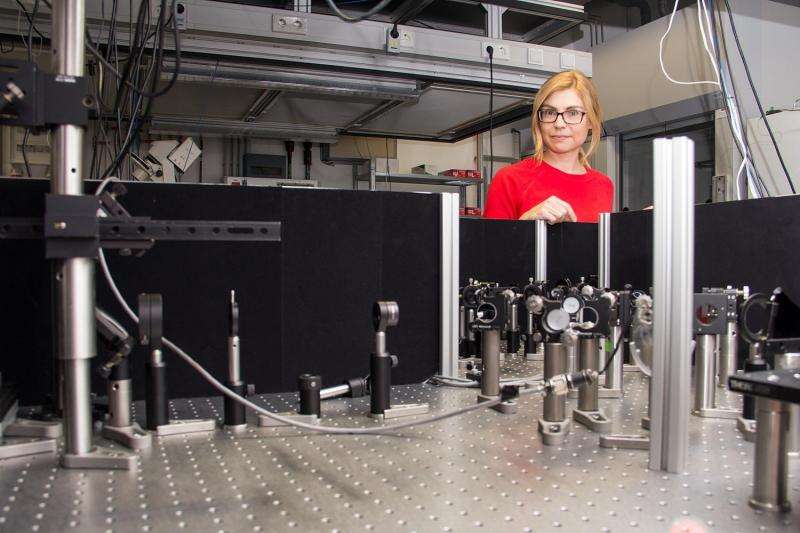Rafts on the cell membrane

Tiny structures made of lipid molecules and proteins have been believed to wander within the membrane of a cell, much like rafts on the water. This "raft hypothesis" has been widely accepted, but now scientists at TU Wien (Vienna) have shown that in living cells these lipid rafts do not exist. This result has now been published in the journal Nature Communications.
Fluid Membranes
"We should not think of the cell membrane as a static, solid surface", says Eva Sevcsik from the biophysics group at TU Wien. "The membrane, the outermost layer of the cell, is fluid. Its molecules - lipids and proteins - are constantly in motion."
The proteins can serve different purposes. They can act as docking stations for substances from outside, or as channels transporting molecules into the cell. As many proteins influence each other, it appeared likely that such proteins may move within the membrane together as a "nano-raft".
This hypothesis became more and more popular among cell biologists, and "rafts" have been associated with many cellular processes. But the evidence for this hypothesis has only been derived from studies with model systems or dead cells. "Rafts" have never been directly observed in a living cell.
Many researchers used to think that "rafts" are just too small and short-lived to be detected with conventional microscopic methods. In the biophysics labs at TU Wien, a combination of several cutting-edge techniques has now been used to tackle this problem. "On the one hand, we use super-resolution microscopy, which allows us to study single molecules, on the other hand, we can influence the cell membrane using micro- and nanostructured surfaces", says Eva Sevcsik. "That way we can analyse the structure of the cell membrane in completely new ways."
Molecular Lego
First, surfaces were structured on a micrometer scale, so that cells which were grown on this surface could interact with the structure. "It is like molecular Lego", says Eva Sevcsik. "We place molecular building blocks on the micro structured surface, which bind to specific proteins in the cell membrane." The proteins attach to the structured surface and cannot travel across the cell membrane any more.
Therefore, a protein can be selected, which is considered to be an important building block of the nano-raft, it can be fixed at particular positions on the surface and then one can study how the other proteins and lipids react.
The molecules become visible using a special microscopic technique. Tiny amounts of fluorescent markers are attached to proteins or lipids, and then molecules can be filmed as they travel within the membrane. "When we study the motion of single proteins, we can see whether we are dealing with membrane rafts or not", says Eva Sevcsik. "Such a raft, anchored at the artificial nanostructures on the surface below, would offer more resistance to the wandering proteins than the surrounding regions. Therefore, the motion of the proteins would be slower. In our measurements, however, the diffusive motion of the molecules is the same everywhere."
For Eva Sevcsik, the fact that the raft hypothesis has remained popular for such a long time, even though there has never been any direct evidence for it, is not that surprising: "It is always tempting to interpret one's results in the context of an established hypotheses, this is a common problem in science. Our goal was to test the raft hypothesis without any bias or prejudice."
The raft hypothesis as it has been taught up until now has taken a blow. But if raft-like structures travelling across the membrane do not exist, are there other mechanisms providing order among proteins and lipids? "Perhaps the actin cytoskeleton plays a more important role than we had thought", says Eva Sevcsik. The cytoskeleton lies directly below the cell membrane and provides stability. Now, Sevcsik wants to study its function using biophysical research methods.
Journal information: Nature Communications
Provided by Vienna University of Technology

















